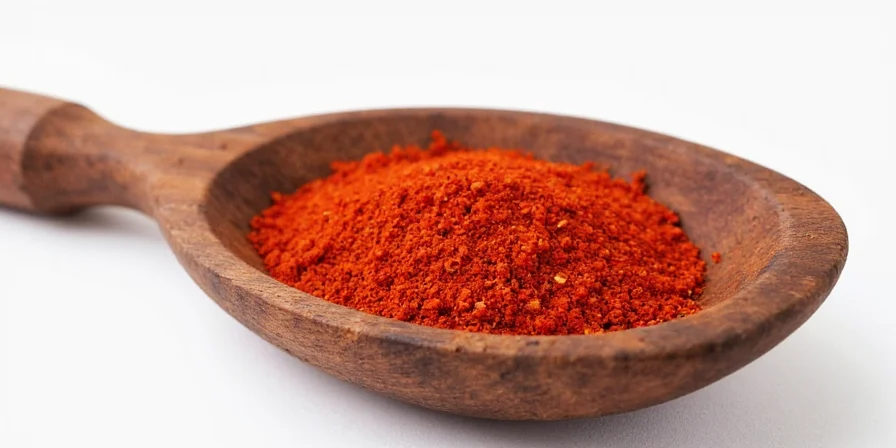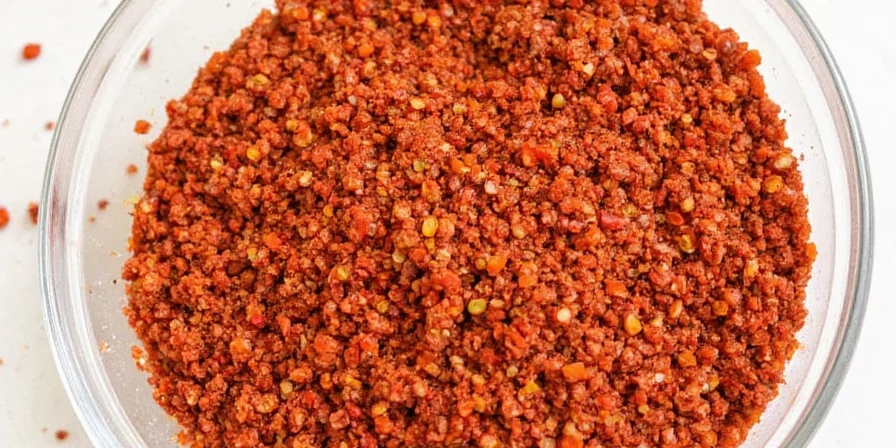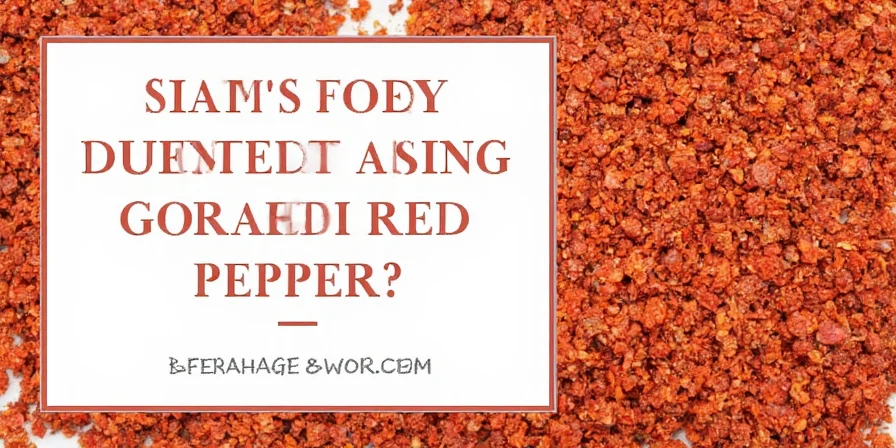Spice Up Your Life: What's Really Inside Crushed Red Pepper?
Introduction
If you've ever sprinkled a pinch of crushed red pepper onto your pizza, pasta, or eggs and wondered, "Wait... what exactly am I eating?", then this blog post is for you. Let’s dive deep into the world of crushed red pepper — not just as a condiment, but as a flavor powerhouse that packs history, heat, and health benefits into every tiny flake.

What Exactly Is Crushed Red Pepper?
Crushed red pepper, often labeled simply as “red pepper flakes,” is a dried and ground blend of various hot chili peppers. It's commonly used to add heat and depth of flavor to dishes without overpowering other ingredients. Unlike cayenne powder, which typically comes from a single type of chili, crushed red pepper can contain multiple varieties, such as:
- Cayenne
- Hatch chiles
- Jalapeños (when fully matured and dried)
- Mexi-Bird peppers
- Poblano (ancho) when dried
The Flavor Profile
Crushed red pepper offers more than just fiery heat. It has an earthy, slightly smoky flavor with varying levels of spiciness depending on the types of peppers used and whether the seeds are included. This versatility makes it a staple in Italian, Mexican, Indian, and even some East Asian cuisines.

Inside the Heat: The Science Behind the Burn
The reason crushed red pepper makes your mouth tingle isn’t magic — it’s chemistry. Specifically, it’s all about capsaicin, the compound responsible for the spicy kick we love (or fear).
Capsaicin: The Firestarter
Capsaicin is found primarily in the inner white ribs and seeds of chili peppers. When you consume it, it binds to pain receptors in your mouth and throat, tricking your brain into thinking it’s being burned. Fun fact: birds don't feel the burn at all, which is why wild chilies spread so easily via avian digestion!
Heat Levels: From Mild to Wild
Not all crushed red peppers are created equal. Here's a quick breakdown of common peppers used and their Scoville Heat Units (SHU), which measure spiciness:
| Pepper Type | Scoville Heat Units (SHU) |
|---|---|
| Jalapeño (mature/dried) | 2,500 – 8,000 |
| Cayenne | 30,000 – 50,000 |
| Thai Chili | 50,000 – 100,000 |
| Red Savina Habanero (some blends) | 350,000 – 577,000 |

Health Benefits of Crushed Red Pepper
Beyond adding zest to your ziti, crushed red pepper might actually be doing your body a favor. Let’s take a look at the potential health perks of this spicy little spice:
- Metabolism Boost: Capsaicin may temporarily increase metabolic rate, helping your body burn calories more efficiently.
- Pain Relief: Capsaicin creams are used topically to alleviate arthritis and muscle pain by desensitizing nerve endings.
- Heart Health: Some studies suggest capsaicin can lower LDL cholesterol and improve circulation.
- Digestive Aid: In moderate amounts, spicy foods can stimulate digestive enzymes and promote gut motility.
- Antioxidant Powerhouse: Chilies are rich in vitamins A and C, plus antioxidants like beta-carotene.

How to Use Crushed Red Pepper Like a Pro
You don't need to be a chef to get the most out of crushed red pepper. Whether you're cooking at home or experimenting with global flavors, here are some tips to use this spice like a seasoned pro:
Pro Tip #1: Add it at the Right Time
- Early addition: Adds a mellow, integrated heat (great for soups and stews).
- At the end: Gives a sharp, punchier kick (perfect for pastas, pizzas, and stir-fries).
Pro Tip #2: Control the Heat
- Want more heat? Leave the seeds in.
- Prefer milder flavor? Sift the flakes to remove larger seed bits.
Pro Tip #3: Blend It Into Sauces and Rubs
Mix crushed red pepper into olive oil, garlic, lemon juice, or soy sauce for an instant flavor boost. Or combine with salt, paprika, and brown sugar for a spicy BBQ rub.
Pro Tip #4: Store It Smartly
Keep your crushed red pepper in an airtight container away from light and moisture. For longer shelf life, store in the fridge or freezer — especially if you live in a humid climate.

Common Myths & Misconceptions
Let’s bust a few myths floating around about crushed red pepper:
Myth #1: All Red Pepper Flakes Are the Same
False. While many brands offer similar labels, the blend of peppers, processing methods, and even regional sourcing can result in vastly different flavors and heat levels.
Myth #2: Crushed Red Pepper Is Just Hot, No Flavor
Wrong again. Good-quality crushed red pepper brings complexity — think smoky, fruity, floral notes along with the fire.
Myth #3: Eating Spicy Food Causes Ulcers
Debunked. Recent studies show that capsaicin doesn't cause ulcers; in fact, it may help protect the stomach lining.
Homemade vs. Store-Bought: Which Should You Choose?
Want to take control of your spice game? Consider making your own crushed red pepper at home. Here's how:
How to Make Homemade Crushed Red Pepper
- Choose your peppers: Opt for a mix like dried Anaheim, Fresno, or New Mexico chiles.
- Dry them thoroughly: Air-dry or use a dehydrator until brittle.
- Toast lightly (optional): Adds a smoky layer.
- Blend or crush: Use a spice grinder or mortar and pestle.
- Store in a jar: Label with the date and enjoy your custom blend!
Pros and Cons of Homemade vs. Store-Bought
| Factor | Homemade | Store-Bought |
|---|---|---|
| Flavor Control | ✅ Customizable | ❌ Limited options |
| Cost | 💰 Can be cheaper long-term | 💰 May be more expensive per ounce |
| Freshness | ✅ Always fresh | ❌ Unknown shelf life |
| Convenience | ❌ Requires time and effort | ✅ Ready to use instantly |

Crushed Red Pepper Around the World
This versatile spice transcends borders and appears in a wide variety of global cuisines:
- Italy: Sprinkled over pizza, pasta, and marinara sauces.
- Mexico: Used in salsas, mole, and tacos al pastor.
- India: Blended into masalas and chutneys for added kick.
- Korea: Sometimes mixed into gochujang or kimchi paste for extra heat.
- North Africa: Combined with cumin and coriander for harissa-based dishes.
Summary Table: Key Facts About Crushed Red Pepper
| Category | Details |
|---|---|
| Main Ingredients | Dried chili peppers (cayenne, jalapeño, poblano, etc.) |
| Active Compound | Capsaicin |
| Heat Level | Varies based on pepper type (typically 2,500–50,000 SHU) |
| Shelf Life | 6 months to 1 year if stored properly |
| Best Uses | Pizza, pasta, stews, sauces, rubs, oils |
| Health Benefits | Boosts metabolism, supports heart health, provides antioxidants |











 浙公网安备
33010002000092号
浙公网安备
33010002000092号 浙B2-20120091-4
浙B2-20120091-4